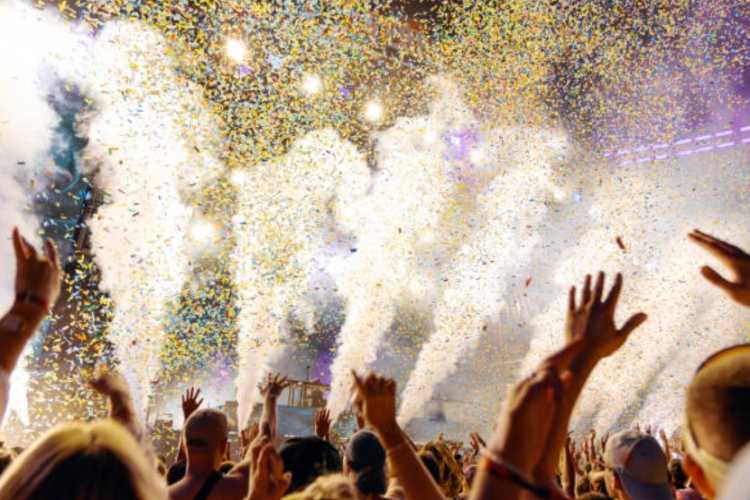Imagine a city government financing a new water treatment plant or a fleet of electric buses not solely from property taxes, but from the vibrant, pulsating energy of a weekend music festival. For urban local bodies (ULBs) across India, from Ahmedabad to Guwahati, this is no longer a distant fantasy. Concert tourism is rapidly transforming from a cultural sideshow into a powerful new instrument of public finance, offering a creative and dynamic solution to perennially tight budgets.
The recent euphoria surrounding a globally renowned music act performing in Ahmedabad was far more than a musical spectacle. It was a masterclass in hyper-localised economic stimulus. A study by EY-Parthenon revealed that the event generated an estimated economic impact of ₹641 crore. While the national and state governments reaped a substantial ₹72 crore in GST revenue, the true magic for a city’s finances unfolded on a more granular level. The hotels, auto-rickshaws, street vendors, and food stalls all experienced a massive surge in business, generating a cascade of direct and indirect revenues that flowed straight into municipal coffers through parking fees, local taxes, and increased business activity.
READ | US power without trust will lead to isolation
Concert tourism as a revenue earner
This phenomenon is not unique to India’s bustling metros; it is a global playbook with a proven track record. The international tours of music superstars have become targeted fiscal transfers to cities worldwide. In American cities like Chicago and Philadelphia, local governments saw record collections from sales and occupancy taxes as hotels reached an astonishing 98% capacity during these events. This financial windfall directly funds essential municipal services-police overtime, sanitation crews, and the upkeep of public parks. These are not state-level windfalls; they are the lifeblood of municipal budgets.
For India’s ULBs, the financial potential of concert tourism is both profound and multi-layered. Firstly, there are the direct revenues. While Goods and Services Tax (GST) is a central and state levy, ULBs can creatively design their own fiscal instruments. They can implement entertainment taxes on tickets, collect significant parking fees, and benefit from a natural surge in property taxes on commercial establishments like hotels and restaurants. A forward-thinking city can calibrate these tools to capture value without stifling the economic viability of the event.
Secondly, and perhaps more critically, are the indirect and induced effects. The sudden influx of spending creates a virtuous economic cycle. The local restaurant owner, the taxi driver, and the souvenir vendor all earn more, and this increased activity expands the local tax base for the ULB. This money circulates throughout the local economy, generating a powerful multiplier effect that benefits the entire urban ecosystem. This is where the real, sustainable fiscal benefit lies-not in a single payment, but in the long-term revitalisation of the local commercial economy.
Cities need to stimulate cultural activity
To truly harness this potential, a city must transform itself from a passive host into an active strategist. The challenge is to move beyond the excitement of a single mega-event. While a one-off concert can be a spectacular show of force, true fiscal sustainability comes from cultivating a regular calendar of events. Cities should aspire to create a consistent flow of cultural activity-be it through regional music festivals, heritage walks, or food fairs. Global examples, from Brazil’s Carnaval to Belgium’s Tomorrowland, show that these are not isolated occurrences; they are meticulously planned, recurring engines of municipal revenue that justify long-term investments in public infrastructure.
The path forward requires shrewd public policy, built on strategic collaborations. Public-Private Partnerships (PPPs) are essential. A ULB may not have the capital to build a massive arena, but it can provide critical assets like land, streamlined permits, and security support. A private partner can then handle the intricate details of event production and talent booking. Revenue-sharing models, which include income from parking, vending zones, and even venue naming rights, can create a steady income stream for the city.
Municipal budgets to get a boost
Ultimately, strategic cultural branding must be seen as a form of fiscal policy. By investing in a unique identity as a destination for a specific genre of music, a particular art form, or a unique cultural experience, a ULB can attract a predictable and steady stream of tourists. This ensures that the fiscal benefits are not a rare windfall but a consistent, predictable component of the municipal budget.
While costs for security and sanitation are a real consideration, the key is to conduct a holistic benefit-cost analysis that looks beyond a single event. The goal is to calculate the net positive fiscal impact on the local economy over a season or even a year, not just to break even on one show.
For the countless ULBs across India grappling with tight budgets and the ever-growing demand for better public services, concert tourism offers a compelling and innovative avenue. It’s a powerful reminder that public finance is not just about the dry, academic subjects of taxation and transfers; it’s about creatively leveraging a city’s unique assets to create shared prosperity. By creatively tuning into this opportunity, our city governments can strike a chord that resonates not just culturally, but fiscally, building more vibrant and self-reliant urban economies.
Mihika Bhumkar is a graduate Student, School of Interwoven Arts and Sciences, Krea University.

